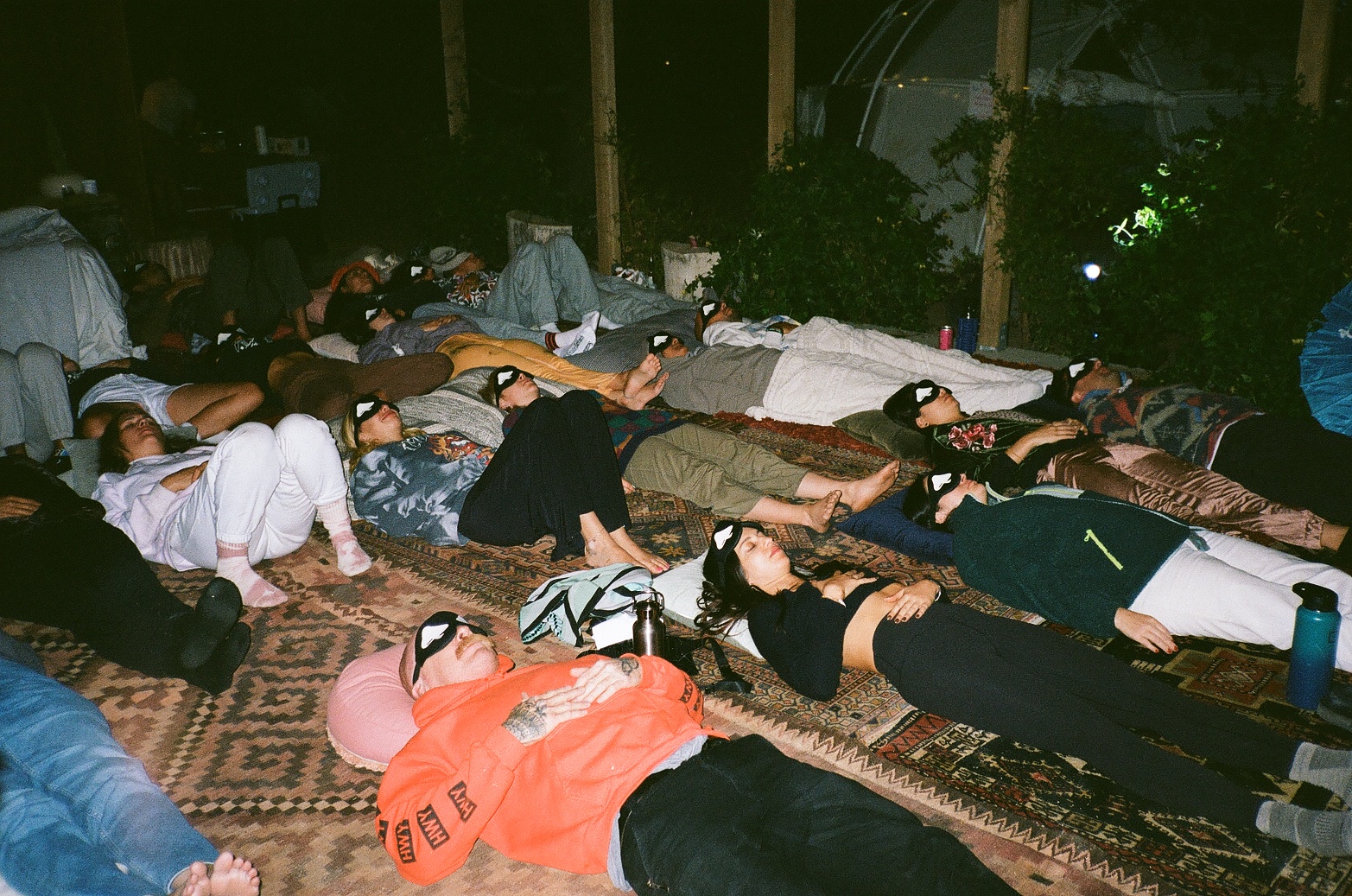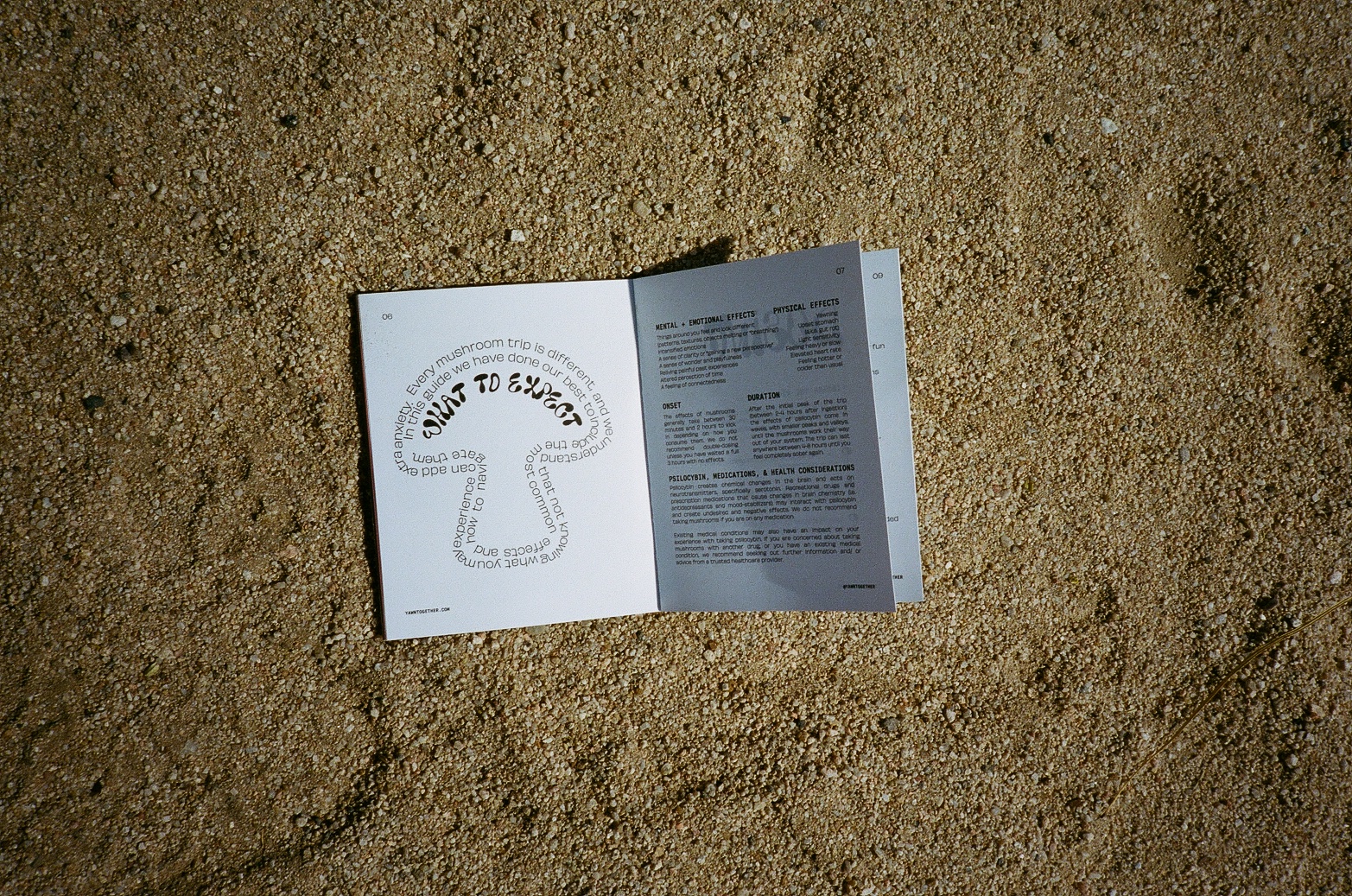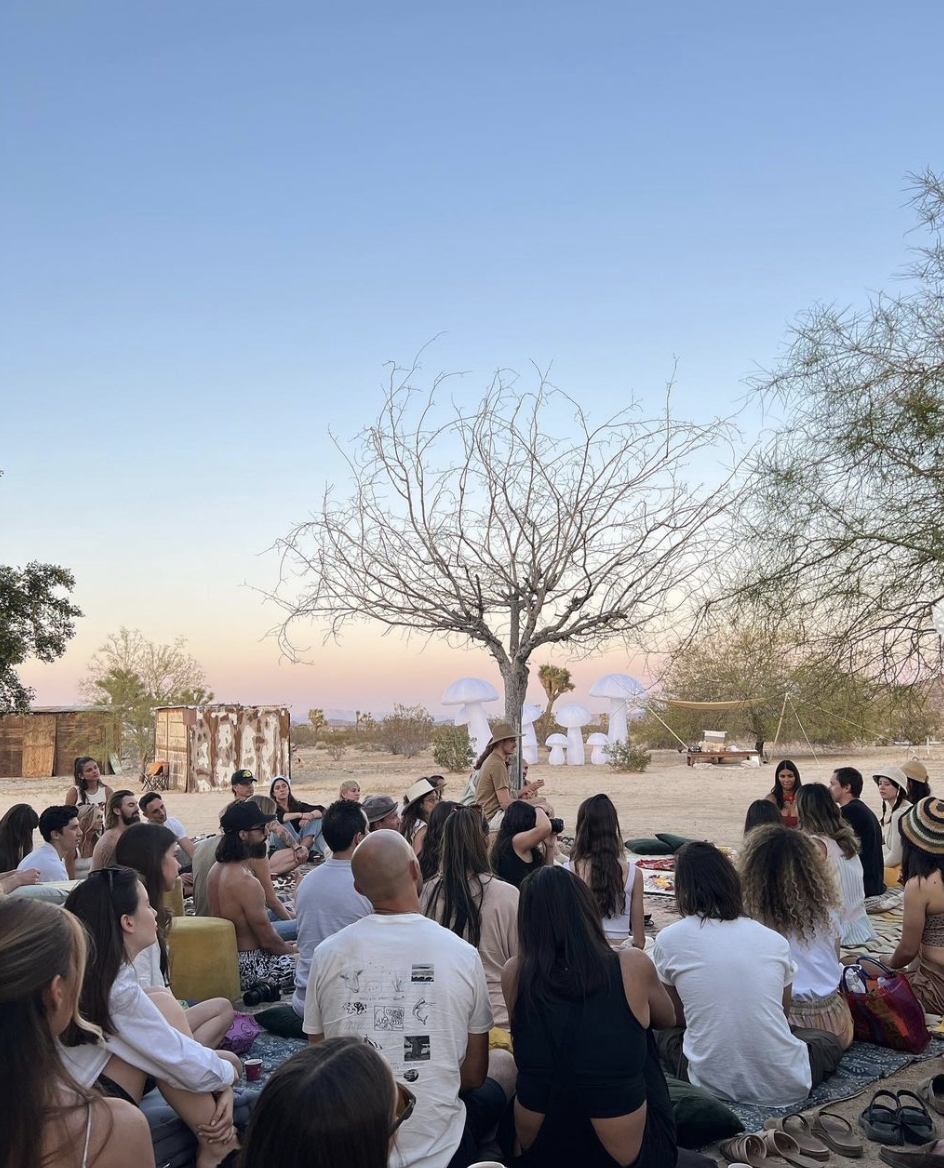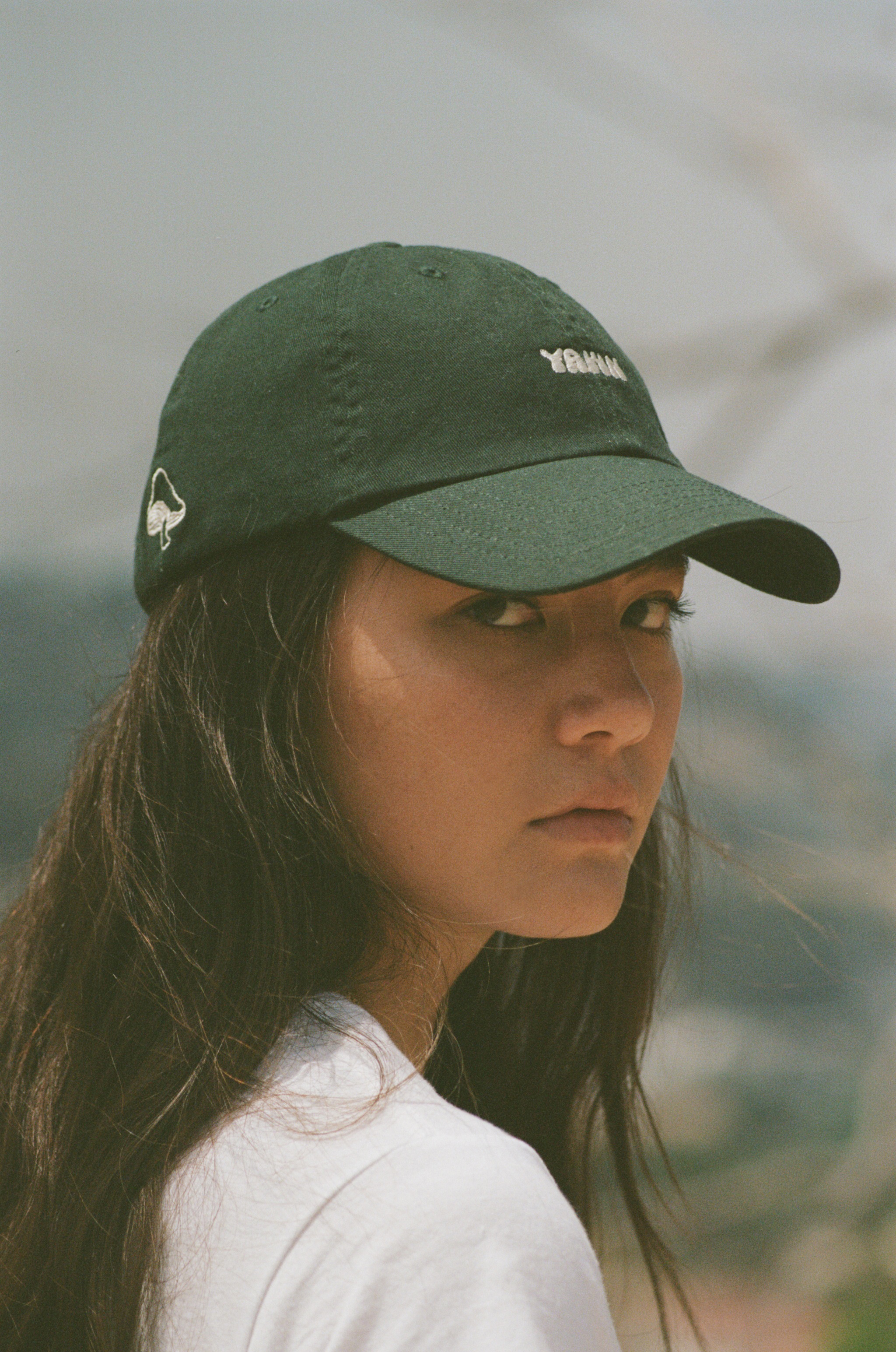
We’re living in a new era of psychedelia. Thanks to recent studies that highlight the therapeutic benefits of psilocybin, the country has begun to reexamine psychedelic plant medicine like “magic mushrooms.” Just last year, John Hopkins received the first federal grant for psychedelic treatment research in 50 years and many cities across the country have decriminalized the possession of psilocybin, including Santa Cruz, Oakland, Denver, Cambridge, Northampton, Easthampton, Somerville, Ann Arbor, Detroit, Seattle, and the entire state of Oregon, where psilocybin is not only decriminalized but straight up legalized for therapeutic use at authorized facilities.
Without a doubt magic mushrooms, like marijuana, are on a slow-but-steady march toward federal legalization. Or at least decriminalization.
So how do we speed up that process? And what do we actually do when psilocybin is widely available? As the misconceptions around these “drugs” evolve, shift, or even evaporate, there will be plenty of information to parse to make sure that people are able to reap the widely touted benefits. Who does that vital work fall to?
Enter YAWN, a psychedelic culture brand started by two women, which has tasked itself with dismantling the many stigmas attached to psilocybin through education and the power of retail. The brand’s two-pronged approach is very intentional. On one end is the retail side, the brand offers everything from meditation masks, hoodies, hats, t-shirts, stash bags, and other practical accessories with graphics meant to inspire conversation around psychedelics. A portion of the proceeds is sent to the Heffter Research Institute, an organization that seeks to fund leading studies on the benefits of psilocybin. Meanwhile, YAWN’s social accounts and website serve as an education hub hosting Q&As, interviews with MDs, sharing research papers and articles about the indigenous history of mushrooms, and offering practical how-tos that include information on microdosing, harm reduction, and more.
YAWN also takes their education on the road with immersive experiences (Diplo counts himself as a fan and supporter). Their most recent activation saw them partner with Secular Sabbath in Joshua Tree, where they offered custom Trip Kits, guidebooks, and clothing meant to provide education and harm reduction.
To learn more about YAWN’s mission, we chatted with the brand’s co-creator Maddalen Pasini who spoke on her desire to make psychedelics more inclusive and offered advice for first-time users who are interested in delving into the world of psilocybin safely. Let’s dive in!

What’s the main mission of YAWN? How are you trying to reframe the way people look at psychedelics?
We didn’t originally start as a brand. My partner Sam and I have been self-exploring with psychedelics for over 15 years. And what we’ve realized is that there’s a major lack of education. Just seeing the way things are kind of picking up with the second psychedelic renaissance now, the whole medical side, jumping through all the medical hoops and the government system and everything, the reality of the situation is the medical side is not going to be accessible to everybody.
So right now here, at least in Vancouver and LA, you go for psilocybin therapeutic treatment and you’re looking at costs of upwards of three to six thousand dollars. Being on the West Coast seeing things like Skid Row, the downtown East side here in Vancouver, the opioid crisis, and the mental health crisis, a lot of those people are not going to have access to the medical system, and a lot of people fall through the cracks.
Also, not everyone’s going to want to go and trip in a clinic. Not everyone’s going to want that sterile environment.
People are going to need the tools and the education to self-treat. I think the self-treatment side is huge. That could also mean recreationally, and ceremonially with underground practitioners. People just need the education and tools to know how to do it safely. Harm reduction’s a big part of Yawn, making education digestible. So taking all the information from the psychedelic insider world and breaking it down and making it easy to understand and digestible for people.
Our mission is to destigmatize through things like clothing, which is just a fun, accessible touch point. Someone wearing a mushroom shirt can open up conversations in their own community about it and they can also be proud of their mushroom use. We are also rolling out a line of paraphernalia ancillary-type products like storing units and grinders and things that will teach people how to safely use and store. People don’t know that light, heat, moisture will affect the potency of the quality of their mushrooms. People are keeping them in plastic bags. So actually teaching them that they need to keep them in an airtight, waterproof, resistant bag away from heat, will actually sustain their mushrooms in a safe environment. Giving people the tools and also elevated products that will help destigmatize and further the conversation about it, I think that that’s what we’re doing and that’s why we’re staying on the legal side of things in the lifestyle market.
All of these places, as I’m sure you’re aware, are decriminalizing mushrooms. It’s come to be redefined in kind of the same way cannabis has been — though it’s much more about therapy than pure recreation. In Yawn’s view, what is the “typical” new psychedelic user like? In the past, people would default to psychedelics are for hippies, but I know you guys are trying to change that. So where are we today, in your view?
I’ve talked to a lot of people about it and kind of helped them on their journey. In my view right now, especially being on the West Coast, the psychedelic health user is like your mom. My mom is microdosing now. Your mom, your teacher. I think it’s really starting to become more destigmatized, especially with microdosing being able to help with so many different things like anxiety, PTSD, and bipolar mood swings. Obviously, we’re not telling people to go and do this, we’re telling people to either speak to somebody that’s knowledgeable about it or do their own research and that sort of thing. But people are self-treating and they are helping themselves and they’re noticing a huge difference.
And a lot of it is moms these days. Moms have so much stress, it’s so difficult being a parent. And I’ve personally been able to help my own mother and a few of my friends’ mothers really with their issues just through microdosing, which is sub-perceptual.
What efforts is Yawn making to show the psychedelic space as more inclusive?
One, our platform, which provides some education, we’re going to all different people in all aspects of the industry, underground practitioners, marginalized communities, and women. We’re featuring a lot of voices on our platform that may not be heard otherwise or that don’t really have a prominent voice in the space. Right now we are kind of concerned this is going to turn into this capitalist chaos. A lot of these public companies are owned by white males, and in a lot of the conferences, there are a lot of white male speakers. And so we’re just trying to diversify our platform by giving people a voice that might not have a prominent voice elsewhere. And we’re just trying to promote equity in the space.
Another way that we’re doing that is that we’re launching a collaboration in the new year and an activity-driven product. Through those products, we’re actually going to be bringing awareness to and donating proceeds to the Fireside Equity Fund. So the Fireside Project is North America’s first psychedelic peer support hotline. It’s a 24/7 24-hour hotline where you can just call in if you’re having a challenging trip or you just need someone to talk to, some support. And they have created this equity fund… it provides job opportunities like scholarships and education and opportunities for marginalized communities to find work in the psychedelic space to further help their marginalized community heal.
They’ll be able to get jobs, whether it’s with the Fireside Project or with a lot of these psychedelic organizations or harm reduction clinics and so forth. And so what we’re doing is we’re going to be raising a lot of awareness to that organization and that fund and also raising profits for it.
Another way that we did this was we launched one of the first mushroom stash bags that were on the market. It was called the Mustache. We launched it last year. We’re going to be coming up with a second version soon. If you’re in America in certain states where mushrooms aren’t decriminalized and you’re of color and you get caught with this bag, you could go to jail, the war on drugs is still prominent. So with that bag, we kind of rose awareness of those issues and we were raising money for the Drug Policy Alliance in the US.
We’re just trying to bring awareness to the issues within the space as well as how there is inequality as well as provide a space on our platform for those voices.

For someone who hasn’t had any experiences with psilocybin but is very interested, what kind of resources are out there? What do people need to know and why is it so vital to educate people on psychedelics properly before they start experimenting?
I think there’s so much stigma because it was illegal, it was banned, it was so stigmatized that there wasn’t education out there, so when people had their first experience on it and they did it incorrectly or didn’t have knowledge on the way that the things that you should take into consideration like set and setting, which is such a big one.
Who you’re with, the environment you’re in, your mindset, the situations around you, what you’re doing before and after the trip, what you’ve eaten that day, all those things are something to consider. If someone does a larger dose in a situation where they’re not feeling comfortable and they’re going through something mentally, they’re going to have a negative experience. So just being able to have that education before going into it is so important. It’s going to directly relate to the kind of experience you have and what you’re going to get out of it.
I think that there are a lot of great resources out there now, MAPS Organization, Double Blind Magazine is a really phenomenal magazine, there’s a really great book by Michelle Janikian called The Psilocybin Mushroom Companion. We’re actually going to be selling it on our site this holiday, but that’s basically a 101 guide to mushrooms, everything you need to know when it comes to dosage and stuff.
We’ve got a few articles on our site that really touch on some of the beginner-level aspects. But I think the most important things people need to know are set and setting and dosage. Also learning what it does to the brain and the body, I think that that’s really important. People can do this recreationally, but these are powerful powerful plant medicines. Well, fungi is not considered a plant, but it comes from the earth and it’s a very powerful medicine. It’s been used in Indigenous cultures for many, many years and people seem to forget that.
I wanted to ask you specifically about dosing. Can you define what a microdose is versus what a “hero dose” is? Are those antiquated terms? How do people zero in on the particular dose that’s right for them? And should you always start small? Should you start somewhere in the middle? Is it just a personal thing?
Microdosing is sub-perceptual, so you’re not actually supposed to feel high. So I always recommend starting off smaller. A microdose could be anywhere from 10 to 20 milligrams or up to 100, 150, 200 milligrams. It really depends. I microdose often and I still only take 50 milligrams once every three days. And I’ll take a few weeks off here and there because you do grow tolerance; it’s impossible to be addicted to this medicine because you really grow a tolerance to it. But microdose is anywhere under 150-200 milligrams. But I recommend starting off small, try 20 milligrams once every three days or whatever method you want to use, five days on, two days off. And then going above that.
A dose that you’re going to feel is 0.5 grams. I guess an actual dose would be considered 0.5 to probably about two grams. And then a larger dose is going to be upwards of three grams. A heroic dose is considered five grams. Terence McKenna has the five dried grams and he goes by himself into a room with a blindfold on and he can speak to the mushroom god and that’s kind of where he transcends. And I’ve done that as well in a ceremonial setting.
It’s different for everybody. Some people like to go big at the beginning, but they just need to be aware that if they have trauma it might come up. So you might want to be with a trip sitter or somebody safe when you’re doing that. And you also want to make sure that you’re aware of what’s going on with yourself mentally and physically when you’re about to enter that kind of space because everyone does react very differently, I highly recommend starting off small because you can always eat a bit more as you go. And it’s also, a lot of it is dependent on your digestion, your metabolism. If you had a massive meal, if you’re going to take two grams, those might not hit for two or three hours. You might get hit with those a bit later because of how your body digests. So you have to be careful of that as well.

You mentioned sub-perceptual doses. If you’re not feeling high, what should you be looking for in terms of knowing if it’s doing anything?
I think the best way to do that is by journaling and tracking how you feel. Because obviously, you don’t always feel the effects or the overall effectiveness of something unless you’ve done it consistently for a little while. So what I do is I track monthly. I do like the one day on two days off protocol and I do 50 milligrams and I journal my mood every day. The days that I don’t actually take it, I’m known to have mood swings so I can feel myself being moodier. The days that I do microdose, I’m happy and it’s consistent all the way through and I’ve been able to focus a little bit better and be a little bit more creative.
I’ve learned that through my journaling. Then I’ll take a month off and then see how that looks. So you really do have to track it, especially with microdosing, and it’s very different for everyone. And you can also track it, try taking a higher dose and see how you feel and see the second or third month if it’s different if you’re taking a hundred milligrams once every three days.
Again, nothing is completely instantaneous unless you’re taking a big dose, then you’ll feel that right away. But with microdosing and taking a sub-perceptual amount, it’s really about tracking it, journaling it, reflecting, and integrating how you feel.
What sort of advice do you have for first-timers? What sort of environment is conducive to a good experience, or is that entirely personal?
It’s definitely entirely personal. I either recommend researching a really great underground practitioner to do it in a ceremonial setting if someone wants to intentionally face some trauma or have that sort of spiritual experience. If they just want to do it with a friend, maybe one or two close friends who they really trust and feel comfortable with in a very comfortable setting, I always recommend doing it in nature.
It’d important to have a trip sitter, so maybe someone who’s not as high or someone that’s sober to watch over you if you’re doing a higher dose for your first time and you’re nervous about it. Make sure you preplan the music you’re going to listen to so you’re not finicking with it, something that’s going to really keep you in a positive head space. And also just being mindful of your mentality going into it and the things going on in your life because trauma can come up. Being aware of that and being open-minded, because not every trip is going to be the same, so as long as you’re open-minded and you don’t have as many expectations, you won’t be as affected if something goes in a different direction.
If a trip does go sideways, what are some good ways to re-center yourself? And what should you look for in a trip sitter?
I think in a trip sitter, you want somebody who’s very responsible, someone who you feel very comfortable around, somebody you trust and somebody who’s responsible and that will be able to handle the situation. If things tend to go a little bit more sideways, there are a few things that you can do to kind of change the environment. Maybe it’s changing the lighting, maybe it’s changing the music, maybe it’s going into a different room, maybe it’s going for a walk outside. Changing the environment around you can make a huge difference when you’re on mushrooms because it can be very visual.
Maybe calling someone that you really love and trust that you want to talk to pull you out of it. And just remind yourself that this is temporary, you are high, and be a little bit more present in the situation instead of letting it take over you.
I think psychedelics and mushrooms seem to have kind of captivated what one might call the “young Hollywood crowd.” I know people can view psychedelics sometimes as a sort of church. I was wondering just where you stand on that. Is that a dangerous or a positive thing?
Personally, I think that the more people talking about psychedelics and the more normalized the conversation is and the more trendy it is, I think the ability it has to help more people. That’s why my partner Sam and I started YAWN. I think people like Will Smith talking about his ayahuasca experience, and Meek Mill talking about psilocybin and how amazing it is, I think that is important. It’s obviously important for people to understand education and the history of it, the history of the indigenous cultures who’ve been using this medicine for so long, and the roots of it, and not that it’s just these rappers using it these days or these pop stars or whatever it is. But I think that that’s the gateway to open up this whole door of helping more people. I think the more people it can help the better.
Ultimately, the more conversations people have about it, I see that as being a positive. I’m more so concerned about how the medical side and the capitalist side of things are going to go. When Will Smith talks about ayahuasca, he does it in a very proper ceremonial setting and he talks about his experience and how heavy-duty it actually is. So I think it is a good thing.

